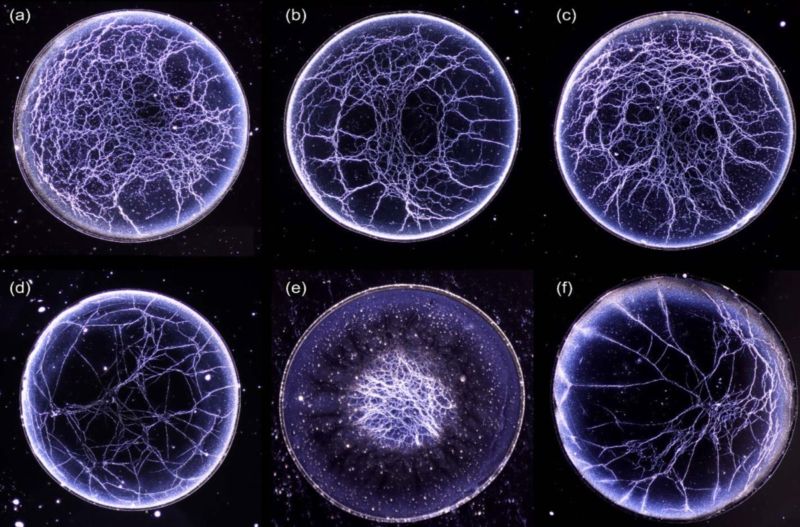Forget that tired-old coffee ring effect: “Whiskey webs” are the new hotness

Enlarge / Whiskey web patterns are unique to each sample of tested American whiskey. (l-r) Four Roses, Heaven Hill, Maker's Mark Cask Strength, Jack Daniel's Single Barrel Proof, Pappy Van Winkle's Family Reserve 23 Year, and Woodford Reserve Double Oak. (credit: Stuart J. Williams et al./PRF)
American whiskeys are distinctive from their Scottish counterparts in one very distinctive way: they leave behind an unusual web-like pattern as droplets dry up, and those webs are different for different brands-making them a kind of "fingerprint." That's a property that can be used not only to tell the difference between brands of American whiskeys but could one day lead to an effective method for the identification of counterfeits, according to a new paper published in ACS Nano.
As we reported last year, Stuart Williams, a professor of mechanical engineering at the University of Louisville in Kentucky, noticed one day that if he diluted a drop of bourbon and let it evaporate under carefully controlled conditions, it formed what he terms a "whiskey web": thin strands that form various lattice-like patterns, akin to networks of blood vessels. Intrigued, he decided to investigate further with different types of whiskey-plus a bottle of Glenlivet Scotch whisky for comparison. It was the perfect project for his sabbatical leave to study colloids (suspended particles in a medium, like Jell-O, whipped cream, wine, and whiskey) at North Carolina State University.
Fundamentally, it's the same underlying mechanism as the "coffee ring effect," when a single liquid evaporates and the solids that had been dissolved in the liquid (like coffee grounds) form a telltale ring. It happens because the evaporation occurs faster at the edge than at the center. Any remaining liquid flows outward to the edge to fill in the gaps, dragging those solids with it. Mixing in solvents (water or alcohol) reduces the effect, as long as the drops are very small. Large drops produce more uniform stains.
Read 12 remaining paragraphs | Comments